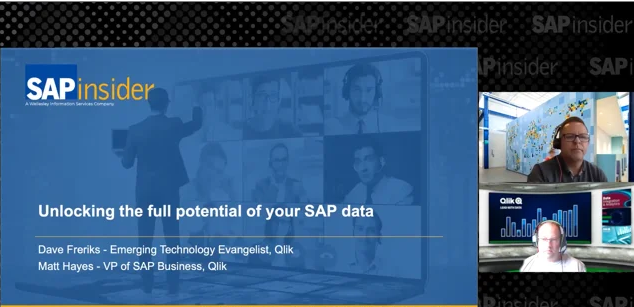How to Retain Your Data Science Talent
Meet the Experts
By Kumar Singh, Research Director, SAPinsider
Attrition in Data Science teams had hit an all-time high prior to the pandemic. And now we are looking at “The Great Resignation”. There is no speculating what type of talent is the most desired (and required) in this digital decade as companies scramble to attract as well as retain analytics and data science talent. With technology getting commoditized fast, it is the talent that will help companies leverage digital capabilities to build competitive differentiators. The problem you are staring at as an analytics leader is twofold. You have to attract as well as retain the best analytics and data science talent. This article focuses on the latter and shares few approaches you can leverage.
1. Think Long Term During Hiring
In this Data Science frenzy, it is easy and tempting to hire what I call “warm bodies” – resources that will “get the job done”. There can not be any approach more dangerous than this. Hiring advanced analytics talent is an investment, not only in monetary terms but it is also an investment in your organization’s future. Every assignment or project they work on, they gain skills and knowledge that is an investment your organization is making. Make sure that you keep retention on the top of your mind during the hiring phase:
Explore related questions
(1) Be honest in the job description about the role and responsibilities so that there are no surprises for the candidate after they come on board.
(2) Make sure you provided candid inputs to the candidate on the company culture so they don’t feel like an outlier after coming on board.
(3) If you think there will be “difficult” stakeholders that this role will have to interact with, don’t shield the candidate from these individuals during the interview process. Candidates need to be familiar with all types of stakeholders they need to interact with.
(4) During onsite interviews, give them the “feel” of their would-be workspace and the workplace infrastructure and amenities. You will be surprised how many data scientists I have interacted with leave because they did not like their “surroundings” after they started.
2. Provide Structured Onboarding
After the candidate has been extended an offer, this is the most critical aspect from my perspective.
(1) DO NOT combine the first week of onboarding of your data science resources with other new hires (other than the sessions where new hires go through standard policies and paperwork). Customize the first week so that it is focused on them.
(2) Develop a detailed plan for the first 90 days. Don’t rush to make them work 100% on projects as soon as they start, even if they are senior hires. Integrate a daily onboarding plan like meeting key stakeholders etc. in their schedule for the first three months. Again, building true data science capabilities are mid and long-term plays and hence you should approach it accordingly. While any experienced data scientist will definitely start adding value as soon as they join, structure their projects in alignment with your vision, your understanding of their skills, and their expertise and interest.
(3) Provide the onboarding plan to the candidate after an offer has been extended and before they start and seek their feedback to determine what they think is critical for them to be successful, that is missing from the plan. This works great for experienced hires since they would have additional perspectives on the aspects they want to be incorporated. This also showcases that you are invested in “personalizing” their career within your organization.
3. Tailor their Engagements
You may not have the privilege of having a large data science but irrespective of the size of your Data Science team, try your best to align the projects you assign to your resources that align with their expertise and interests. They need to play to their strengths but also need to expand their knowledge zone. It is a delicate balance but is necessary to take into account for retention purposes.
4. Invest in Continuous Learning
World-class data scientists understand that the field of advanced analytics and data science is exploding and the only way to stay relevant is to learn continuously, off the job as well (i.e while not working on actual projects). Invest in their continuous learning. As much as possible, don’t throw “cookie-cutter” curriculums and pieces of training at them. Every data scientist, over their career, develops certain areas of expertise and areas of interest. Forcing them to undergo training that primarily falls in their area of expertise but not in the area of interest that they want to develop, will make the training a painful “checkbox” exercise.
5. Provide them Ample Opportunity
Creating multiple hierarchies in Data Science teams is difficult and not always feasible. Even though you create hierarchies, the talent in such teams is generally high quality so promotion decisions are not only difficult, they can be a reason for attrition as well. However, organizations don’t realize that their Data Science teams are not just a pool of advanced Analytics resources. Imagine if you can find a data scientist from that team who can work at the intersection of data, technology, and business. Making them lead functional planning departments after they have spent few years as Data Scientists will not only be a career-enhancing opportunity for them but can do wonders for your organization by helping propagate a data-driven culture in the organization. This is just an example but if you can get creative and create multiple career paths for your Data Scientists, you will be able to keep that knowledge within your organization.
What does this mean for SAPinsiders?
Post pandemic world adds a whole another set of challenges for managers struggling to retain data science talent. Consider the aspect of remote work. If your talent is remote, all the five aspects mentioned above become much more challenging to deliver. So when you strategize how to deliver these aspects, you have to make appropriate tweaks for the talent that is remote.
While creating an optimal data science team structure is not within the scope of this article, it is an extremely important element that can significantly help execute the above retention strategies successfully. An optimal structure will be the result of many different strategies like corporate strategy, functional strategies, cloud strategy, data strategy, etc.
If possible, deploy an HR business partner exclusively for this type of talent, just to manage their career as well as hear them out, outside of their organizational hierarchy. Typically, this HR business partner will have some experience in analytics heavy organization, so that they understand the unique nuances of such resources.






